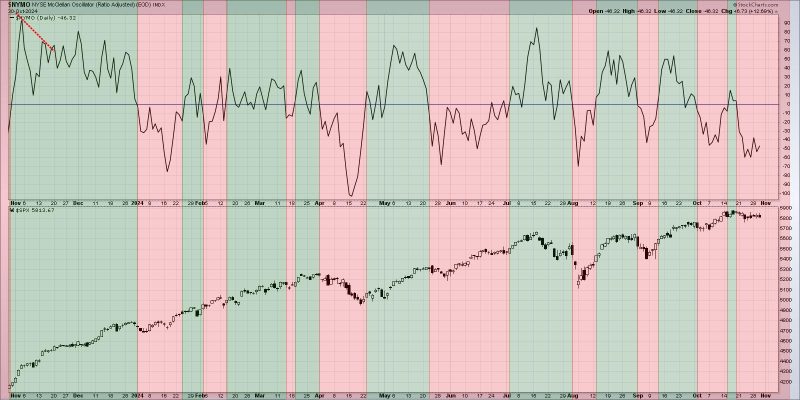Breadth Divergences: A Sign of the Bull Market’s End?
Breadth divergences have long been a topic of interest and speculation among market watchers and analysts, as they often signal shifts in market trends. As the current bull market continues to climb to new heights, many are questioning whether breadth divergences could be hinting at an impending end to this prolonged period of growth.
Market breadth refers to the number of stocks participating in a market move. A broad-based rally with widespread participation is typically seen as a sign of a healthy market, as it indicates that many stocks across various sectors are moving higher. On the other hand, a narrow rally, with only a few stocks driving the gains while the majority lag behind, can be a warning sign of underlying weakness.
Divergences in market breadth occur when the overall market index is reaching new highs, but a smaller percentage of stocks are participating in the rally. This disparity can indicate that the market’s strength is more fragile than it appears on the surface. While some stocks may be soaring to record levels, others may be struggling or even declining, painting a more nuanced picture of the market’s true health.
One key measure of market breadth that analysts often focus on is the advance-decline line. This indicator tracks the number of advancing stocks versus declining stocks on a given trading day. When the market index is rising but the advance-decline line is showing signs of weakness, it could be a red flag that the market’s upward momentum is waning.
Another popular breadth indicator is the percentage of stocks trading above their 200-day moving average. This metric provides insight into the overall health of the market by analyzing the number of stocks in a bullish long-term trend. A declining percentage of stocks above their 200-day moving average could indicate that fewer stocks are participating in the market’s uptrend, suggesting that the rally may be losing steam.
While breadth divergences can be a cause for concern, it’s essential to consider other factors when evaluating the market’s health. Economic indicators, corporate earnings, interest rates, and geopolitical developments are just a few of the many variables that can influence market trends.
It’s also worth noting that breadth divergences are not always a definitive signal that the bull market is coming to an end. Markets can experience periods of divergence without necessarily ushering in a major downturn. However, when coupled with other warning signs, such as excessive valuations, rising inflation, or deteriorating economic conditions, breadth divergences can become more significant.
In conclusion, while breadth divergences can provide valuable insights into the underlying strength of the market, they should be considered alongside a comprehensive analysis of various market factors. As the bull market continues its upward trajectory, investors and analysts alike will be closely monitoring market breadth indicators for any signs that might suggest a changing tide.

